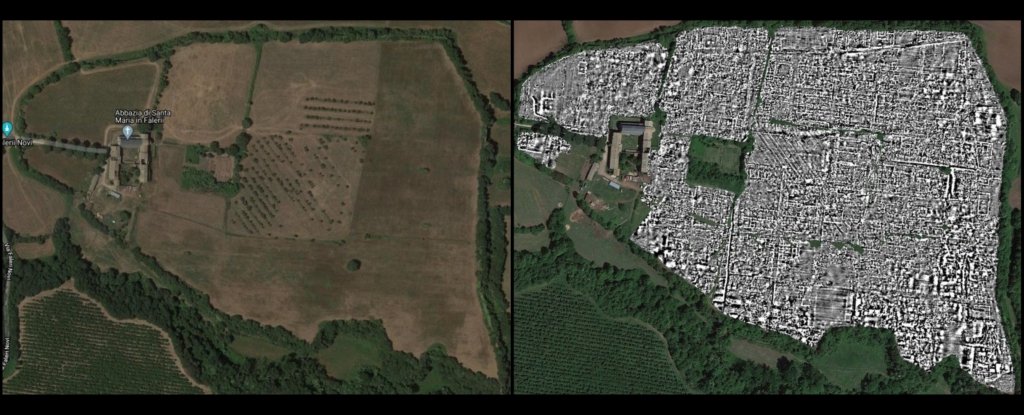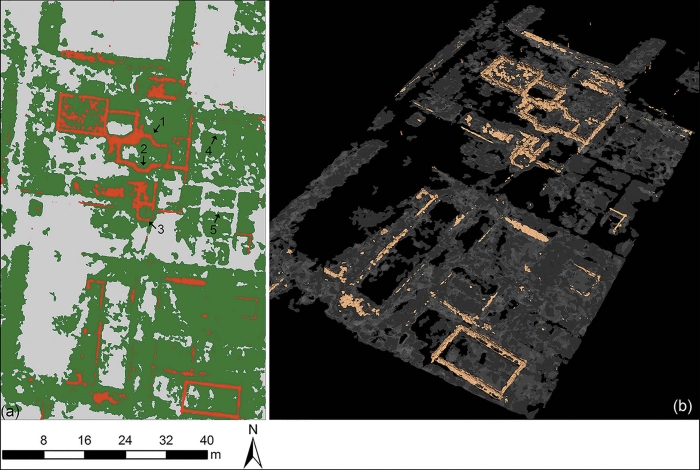Introduction to Falerii Novi
Falerii Novi, an ancient Roman city, has been uncovered 30 miles outside Rome using advanced ground-penetrating radar technology. Built in 241 B.C. and abandoned around A.D. 700, this city offers a unique glimpse into Roman life and architecture. Spanning 75 acres—about half the size of Pompeii—Falerii Novi stands as a testament to the sophistication of Roman urban planning and everyday life.
Key Features of Architecture and Urban Planning
1. Sophisticated Bathhouses and Massive Public Monuments
The radar scans revealed an intricate public bathhouse where residents likely gathered to relax and socialize. Additionally, a massive public structure, unlike anything previously discovered in Roman archaeology, was identified. This structure may have played a significant cultural or political role in the city.
2. A Unique Aqueduct System
One standout feature of Falerii Novi is its underground aqueduct system, which was routed directly beneath the streets. This innovative design ensured a steady water supply while demonstrating the Romans’ ingenuity in adapting to terrain and optimizing urban space.
3. Unusual Temple Placement
Unlike traditional Roman cities where temples are centrally located, Falerii Novi’s temples were positioned on the outskirts. This layout may reflect shifts in religious practices or priorities in urban design.

Revolutionizing Archaeology with Radar Technology
1. Non-Invasive Techniques
Thanks to ground-penetrating radar, researchers collected over 28 billion data points to create a detailed 3D map of Falerii Novi without excavation. This breakthrough preserves the site’s integrity while significantly reducing costs.
2. Unprecedented Detail
The radar data not only provided an overall view of the city but also revealed how its structures were built, the distribution of residential and communal areas, and how the city evolved over time in response to social and economic changes.
3. The Future of Archaeology
The discovery of Falerii Novi highlights the transformative potential of modern technology in archaeological research. This method is expected to pave the way for further exploration of ancient civilizations.

Analyzing the Historical and Cultural Significance
1. A Window into Everyday Roman Life
Falerii Novi was not a major metropolis like Rome but a smaller urban center, offering insight into the lives of the middle and working classes. Markets, theaters, and exercise facilities reveal a vibrant and dynamic community.
2. Innovative Urban Planning
Elements such as the peripheral placement of temples and the underground aqueduct system demonstrate the Romans’ flexibility and creativity in designing cities to meet practical and spiritual needs.
3. Connections to Larger Roman Networks
Located near Rome, Falerii Novi likely served as a key hub, providing agricultural goods or other resources to the larger city. This underscores the importance of smaller cities within the Roman Empire’s economic and social network.

Conclusion
The discovery of Falerii Novi not only illuminates a vital chapter of Roman history but also showcases the role of technology in preserving and studying the past. This city exemplifies Roman advancements in urban planning and engineering while laying the groundwork for future research into ancient civilizations.
